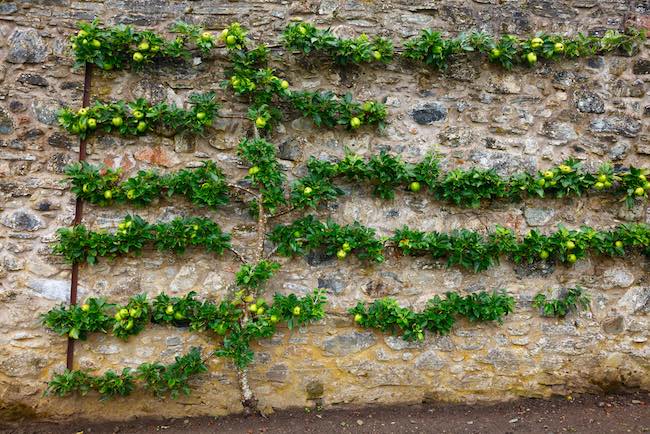Planting espalier and fan trained fruit trees

Late winter is the ideal time to plant fruit trees, particularly using bare-rooted plants that have been harvested by growers directly from the fields. Bare-rooted plants are often of better quality compared to those grown in pots, which are typically found in garden centers later in the year.
A popular and effective method for growing fruit trees is training them as espaliers or in a fan shape. This approach not only produces more fruit in a small area but also enhances the overall yield by increasing the number of fruiting spurs and buds. When branches are trained downwards, the plant’s hormones settle along the entire length of the stem rather than concentrating at the top. This process results in more fruiting buds forming along the stems, ultimately leading to increased fruit production.
Growing espalier and fan-trained trees against a wall or fence offers additional benefits. It makes the trees easier to maintain, especially when it comes to protecting the fruit from birds. As the fruit ripens in autumn, these trees can be easily netted to prevent birds from eating the harvest.
If you wish to grow fruit trees in pots or containers, we recommend using a soil-based compost, such as John Innes No. 2, which provides a suitable balance of nutrients and stability.
Rather than buying a ready-trained fruit tree, it’s easier to buy a young tree and train it yourself.
Several types of fruit trees can be successfully trained as espaliers or fans, and some are available as instant fan-trained shapes. These include:
- Apple
- Pear
- Cherry
- Nectarine
Overall, growing espalier or fan-trained fruit trees allows for efficient use of space, increased fruit production, and easier maintenance, making them a great choice for any garden.Here is a link to creating the wires needed to support and fan trained or espalia fruit tree Click Here